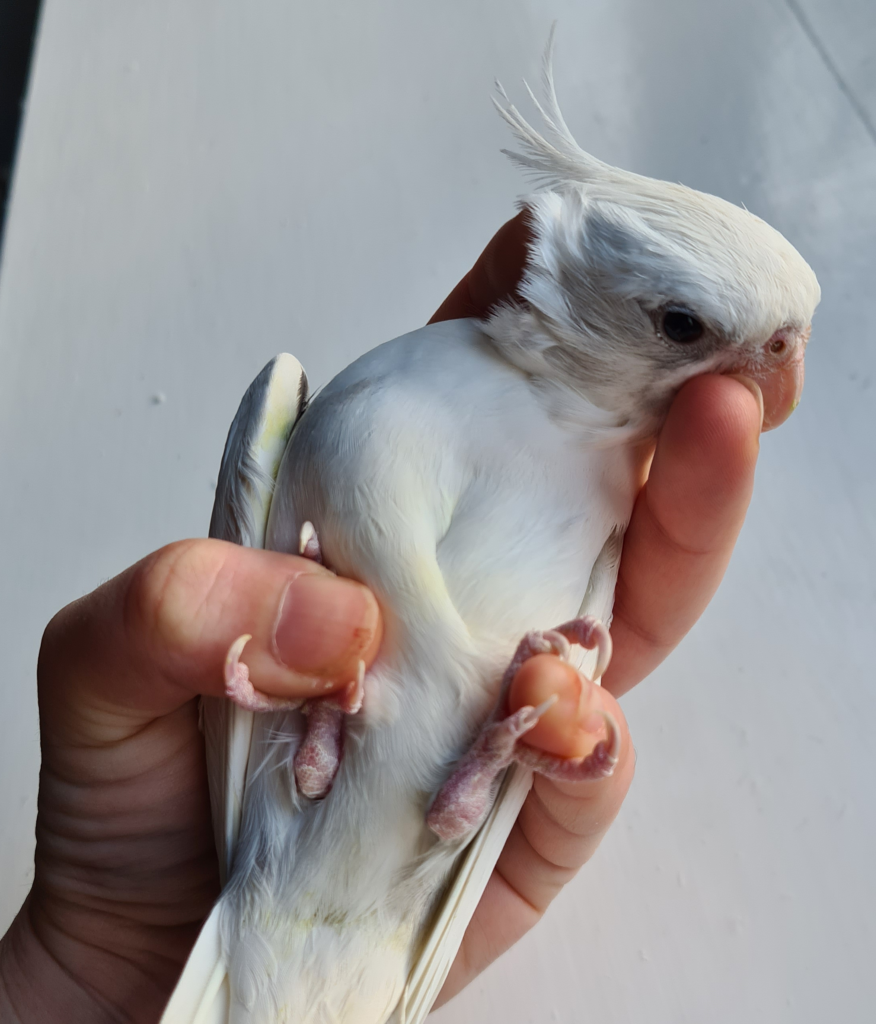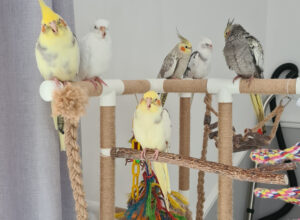How To Handle Your Cockatiel Safely
- Learn the Basics: Before handling your cockatiel, familiarise yourself with essential care tips to ensure a safe and comfortable experience for both you and your bird.
- Gradual Introduction: Slowly introduce your hand to your cockatiel to build trust and make handling a positive experience.
- Proper Handling Techniques: Use gentle, firm grips and support your cockatiel correctly to avoid injury.
- Recognise Signs of Stress: Pay attention to your cockatiel’s body language to avoid stress or discomfort during handling.
- Regular Health Checks: Incorporate handling into routine health checks to keep your cockatiel healthy and accustomed to human touch.
As a cockatiel owner and enthusiast, I’ve spent years navigating the joys and challenges of living with these charming birds. From their playful antics to their affectionate natures, cockatiels make fantastic companions. However, handling these delicate creatures safely requires knowledge, patience, and practice.
I’ve found that by handling my cockatiels in a safe manner from a young age, it gets them used to being handled. This is so important when it comes to checking them for health issues. Or if you choose to trim their nails yourself. Most importantly, if you find your cockatiel bleeding from a night fright for example where a blood feather has been broken, it’s essential to know how to handle your bird to stop the bleeding.
This article will guide you through safely handling your cockatiel, ensuring a positive experience for both you and your feathered friend.
Understanding Cockatiel Behaviour
Before attempting to handle your cockatiel, it’s vital to understand their behaviour. Cockatiels are social birds that thrive on interaction but can be skittish around unfamiliar things, including humans. Recognising signs of fear or stress, such as hissing, retreating, or ruffled feathers, is crucial in building a trusting relationship. Familiarise yourself with cockatiel behaviour to interpret their moods and needs accurately.
Building Trust
The foundation of safely handling your cockatiel lies in trust. Start by spending time near their cage, talking softly to accustom them to your presence and voice. Gradually introduce your hand into their cage without making direct contact, offering treats to encourage positive associations. Patience is key; this process may take days or weeks.
Proper Handling Techniques
Once your cockatiel is comfortable with your presence, you can begin to handle them. Here are some steps to ensure safe handling:
- Approach Slowly: Move your hand slowly towards your cockatiel, allowing them to see and recognise you.
- Offer Your Finger: Present your finger at chest level for them to step up onto, using gentle pressure against their chest as a cue.
- Support Their Body: When picking up your cockatiel, support their body with your other hand, ensuring they feel secure.
Should you need to grip their bodies for examination, it’s important to support their head and head. Reasons for this include so that you don’t get bitten!
Here’s my silly tame tiel, Chip, as I handle him. He is very used to this and will even lay on his back quite comfortably if it means he gets scritches in the process! Note how my fingers are either side of his head to support this delicate area. By the way, his yellow tint is from one of his toys he played with after a bath!

Remember, each cockatiel is unique, and what works for one may not work for another. Observing and adapting to your bird’s preferences is crucial.
Handling Do’s and Dont’s
| Do’s | Dont’s |
|---|---|
| Approach your cockatiel calmly and quietly. | Make sudden movements or noises that might startle your bird. |
| Use treats to encourage and reward positive interactions. | Grab your cockatiel from above, as this mimics predator behaviour. |
| Support their body and feet securely when handling. | Force handling if your cockatiel is visibly stressed or unwilling. |
Health and Safety
Regular handling is not only beneficial for bonding but also allows you to perform health checks. Gently examine your cockatiel for any signs of injury or illness, including changes in feather quality, posture, or activity level. Familiarise yourself with cockatiel veterinary care to understand when professional advice is needed.
Training and Enrichment
Incorporating handling into training and enrichment activities can improve your cockatiel’s physical and mental well-being. Teach basic commands and tricks to keep their minds active and strengthen your bond. For more on this, explore training cockatiel basic commands.
Conclusion
Handling your cockatiel safely is a rewarding aspect of pet ownership, fostering a deep bond between you and your feathered companion. By understanding their behaviour, building trust, and employing proper handling techniques, you can ensure a positive and safe experience for both of you. Remember, patience and consistency are key. As you grow more familiar with each other, handling will become a natural and enjoyable part of your daily routine, enhancing the unique relationship you share with your cockatiel.

